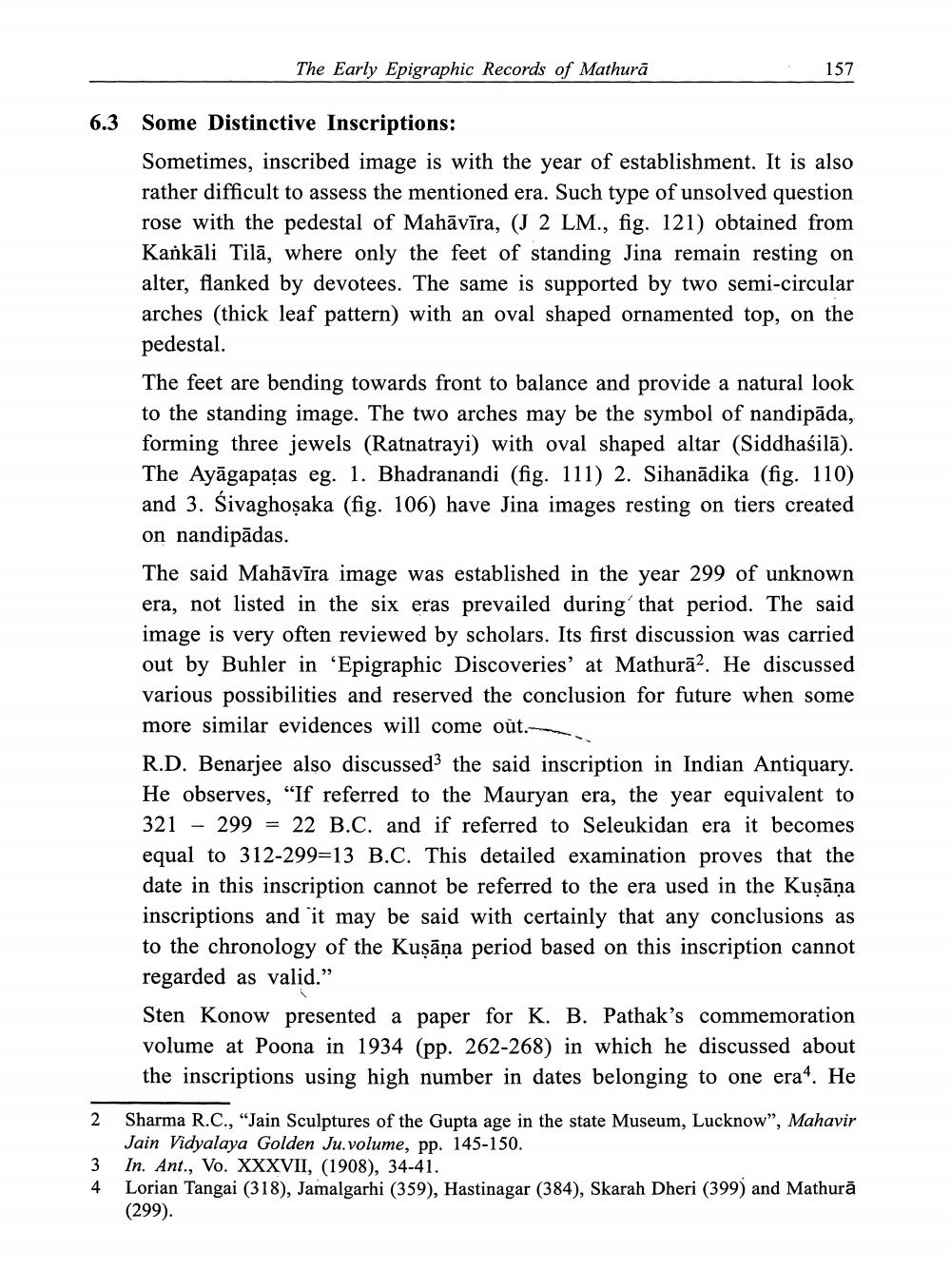________________
The Early Epigraphic Records of Mathurā
157
6.3
Some Distinctive Inscriptions:
Sometimes, inscribed image is with the year of establishment. It is also rather difficult to assess the mentioned era. Such type of unsolved question rose with the pedestal of Mahāvīra, (J 2 LM., fig. 121) obtained from Kankāli Tilā, where only the feet of standing Jina remain resting on alter, flanked by devotees. The same is supported by two semi-circular arches (thick leaf pattern with an oval shaped ornamented top, on the pedestal. The feet are bending towards front to balance and provide a natural look to the standing image. The two arches may be the symbol of nandipāda, forming three jewels (Ratnatrayi) with oval shaped altar (Siddhasilā). The Ayāgapatas eg. 1. Bhadranandi (fig. 111) 2. Sihanādika (fig. 110) and 3. Śivaghoșaka (fig. 106) have Jina images resting on tiers created on nandipādas.
The said Mahāvīra image was established in the year 299 of unknown era, not listed in the six eras prevailed during that period. The said image is very often reviewed by scholars. Its first discussion was carried out by Buhler in 'Epigraphic Discoveries' at Mathurā?. He discussed various possibilities and reserved the conclusion for future when some more similar evidences will come out. R.D. Benarjee also discussed the said inscription in Indian Antiquary. He observes, “If referred to the Mauryan era, the year equivalent to 321 - 299 = 22 B.C. and if referred to Seleukidan era it becomes equal to 312-299=13 B.C. This detailed examination proves that the date in this inscription cannot be referred to the era used in the Kuşāņa inscriptions and it may be said with certainly that any conclusions as to the chronology of the Kuşāņa period based on this inscription cannot regarded as valid." Sten Konow presented a paper for K. B. Pathak's commemoration volume at Poona in 1934 (pp. 262-268) in which he discussed about the inscriptions using high number in dates belonging to one era4. He
2
3 4
Sharma R.C., “Jain Sculptures of the Gupta age in the state Museum, Lucknow", Mahavir Jain Vidyalaya Golden Ju.volume, pp. 145-150. In. Ant., Vo. XXXVII, (1908), 34-41. Lorian Tangai (318), Jamalgarhi (359), Hastinagar (384), Skarah Dheri (399) and Mathurā (299)




